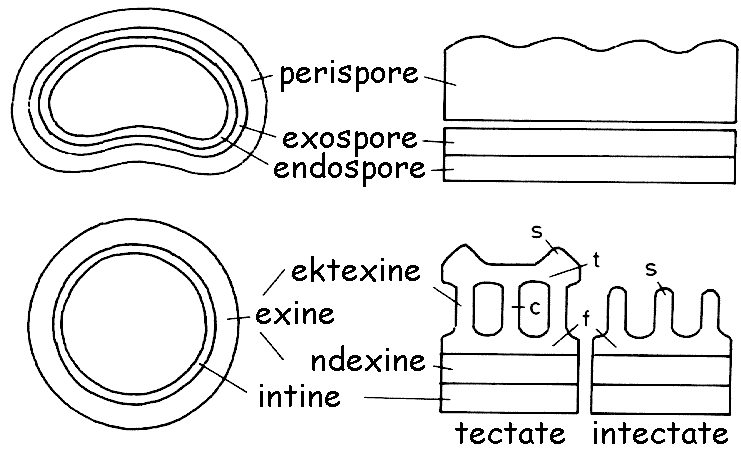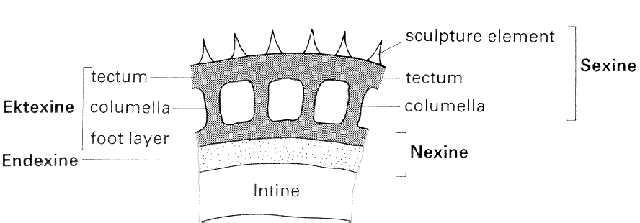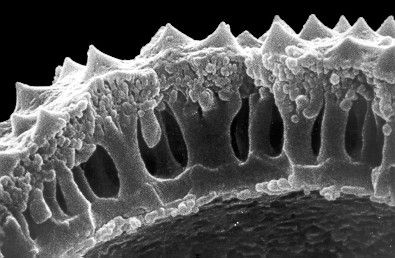






MORPHOLOGY OF MICROSPORES
Pollen grains consist of three substances:
|
The
inside of the cell is filled with living cytoplasm, that
deteriorates rapidly during fossilisation.
|
|
The
inner layer of the cell wall, the intine, consists mainly of
cellulose and pectin, this also degrades rapidly during
fossilisation. |
|
|
The outer cell wall, the exine, consists mainly of sporopollenin, an N-free polymeric substance belonging to the terpenes. Its chemical formula is: C90 H130-158 024-44. Sporopollenin is chemically unsaturated and is corroded by oxygen (oxidation), but is otherwise resistant even to strongly alkaline substances and organic acids. Sporopollenin is thus one of the most resistant substances in the plant world |
Cross-section of the cell wall (structure) of a pollen grain and a spore.

In: G. Lang, 1994, S. 44
The structure of both Pteridophyte and Bryophyte spores is very similar to pollen. They also possess a sporopollenin cell wall consisting of several layers. The inner layers are the endospore and exospore, the outer layer, which often "peels off" is the perispore.
Cross-section of the cell wall (structure) of a pollen grain and a spore.

In: P.D. Moore et al., 1991, S. 64

REM-photograph: Artemisia mutellina by Lucia Wick, IPS
Thanks to the considerable chemical resistance of sporopollenin, pollen grains and spores can be preserved under anoxic conditions in lakes and fens for thousands to millions of years (the oldest preserved pollen of flowering plants found are over 120 Mio years old!). They can therefore be used for the reconstruction of earlier vegetation- and climate-conditions.
As the search for microspores in untreated sediment or peat would be very time-consuming, procedures for the specific extraction and concentration of pollen grains in samples have been developed. Most of these procedures make use of the fact that pollen grains are considerably resistant to chemical treatment. Thus, calcium carbonate can be removed from the samples with HCl, humic acid with KOH, mineral substances with HF, and cellulose with acetolysis (acetic-anhydride and concentrated sulphuric acid) without damaging the structural integrity of the pollen grains. Finally, coarse particles can be removed using a fine-meshed sieve.
The above-mentioned two types of tetrad formation correspond to the two basic types of microspores, the tetragonally formed bilateral microspores and the tetrahedrally formed isodiametric microspores. Apart from the different sizes of pollen grains, their shape, as well as the position of the pollen tube and apertures in the pollen grain can be used as identification criteria.